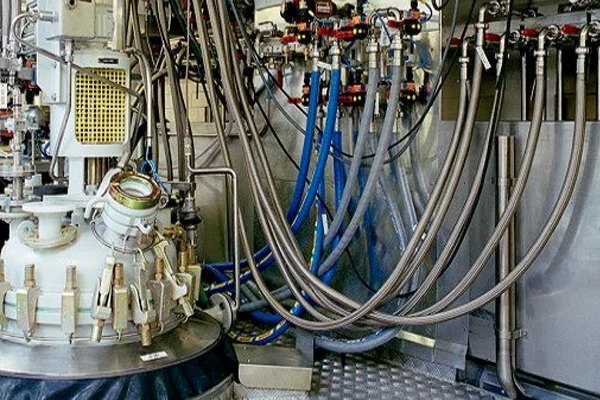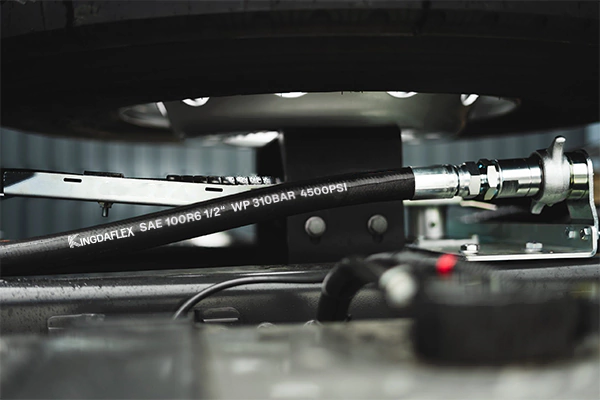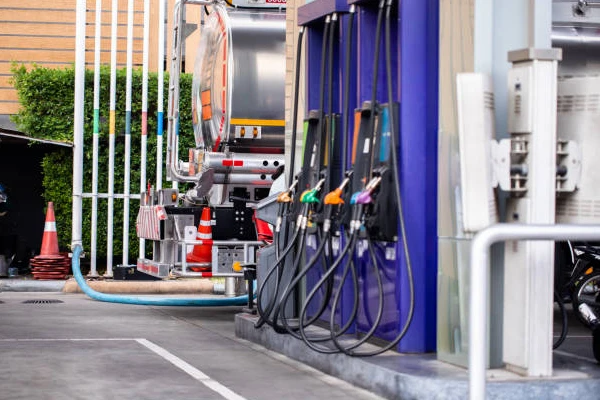Hydraulic systems are the workhorses of many industries, but their performance hinges on a seemingly simple factor: fluid velocity. The speed at which hydraulic fluid moves through hoses and components is not just a technical detail; it’s a critical parameter that dictates the system’s efficiency, reliability, and lifespan.
Understanding and controlling hydraulic fluid velocity is essential for preventing common problems like excessive heat, pressure drops, and energy waste. This blog will explore why fluid velocity matters and provide practical insights on how to optimize it to ensure your hydraulic system operates at peak performance, safely and efficiently.
What is Hydraulic Fluid?

Hydraulic fluid, often called hydraulic oil, is the lifeblood of a hydraulic system, serving as the medium for power transfer. This fluid is a non-compressible liquid that transmits force from one end of a system to another. Beyond simply transferring power, it also lubricates moving parts, dissipates heat generated by the system, and helps to seal gaps between components.
A combination of a base oil (mineral or synthetic) and a host of additives gives it the specific properties needed for various industrial applications.
- Power Transfer: Its primary function is to transmit energy from a pump to an actuator, such as a hydraulic cylinder or motor.
- Lubrication: It reduces friction and wear between components, extending the lifespan of the system.
- Heat Dissipation: It absorbs and transfers heat away from critical parts, preventing overheating and fluid breakdown.
- Contamination Control: It carries contaminants to the filter, which then removes them from the system, keeping the fluid clean.
- Corrosion Prevention: Additives in the fluid protect metal components from rust and corrosion.
What is Hydraulic Fluid Velocity?
Hydraulic fluid velocity is the speed at which fluid moves through a hydraulic system’s pipes, hoses, and components. It’s a critical factor because it directly impacts system performance, efficiency, and component lifespan.
Velocity is not measured directly but is calculated based on the fluid’s flow rate and the cross-sectional area of the conductor. If the velocity is too high, it can lead to heat generation, pressure drops, and noise. If it’s too low, the system can become sluggish and inefficient.
Hydraulic Fluid Velocity Calculation Formula
The most common formula for velocity (V) is
where Q is the flow rate and A is the cross-sectional area of the hose. To get the velocity in feet per second, a common formula is
- Impact on Performance: Fluid velocity affects the speed of actuators (like cylinders and motors) and can cause pressure drops if the lines are undersized, leading to reduced power at the point of work.
- Heat Generation: High velocity can cause turbulence, which increases friction and generates unwanted heat, potentially degrading the hydraulic fluid and damaging seals.
- Cavitation Risk: In suction lines, excessively high velocity can cause pressure to drop below the fluid’s vapor pressure, leading to the formation of vapor bubbles (cavitation) that can damage the pump.
Tips on Determining Hydraulic Fluid Velocity
Determining hydraulic fluid velocity is a key part of designing and maintaining a hydraulic system to ensure optimal performance. The calculation is based on the relationship between flow rate and the cross-sectional area of the hose or pipe. By keeping the velocity within recommended ranges, you can prevent issues like excessive heat, pressure drops, and cavitation that can damage components and reduce system efficiency. There is a universal formula to calculate velocity, but the key is to ensure you use consistent units.
Recommended Velocity Ranges: The optimal velocity depends on the line’s function within the hydraulic system.
- Suction Lines: 2-4 ft/s to prevent pump cavitation.
- Return Lines: 10-15 ft/s.
- Pressure Lines (up to 3000 psi): 15-20 ft/s.
- Pressure Lines (over 3000 psi): 20-25 ft/s.
Hose Sizing: Using the correct hose size is the primary way to control fluid velocity. If you need to increase the flow rate, you must increase the hose’s inner diameter (ID) to maintain the recommended velocity. An undersized hose will cause high velocity, leading to increased friction, heat, and pressure loss. Conversely, an oversized hose can be costly and lead to a sluggish system.
Conclusion
In conclusion, maintaining the correct hydraulic fluid velocity is a fundamental principle of effective hydraulic system design and operation. By carefully sizing components and managing flow rates, you can prevent detrimental issues like overheating and turbulence. A well-designed system that accounts for fluid velocity will perform more efficiently, last longer, and require less maintenance over its operational life.
Ultimately, the longevity and reliability of your hydraulic system are directly tied to the quality of its components. Using robust and properly sized hoses is crucial for ensuring the fluid moves at an optimal velocity without causing excessive pressure drops or heat buildup. Don’t overlook the importance of high-quality materials.
For all your hydraulic needs, including durable hoses designed to optimize fluid flow, trust Kingdaflex. Our wholesale hydraulic hoses are engineered to handle the most demanding conditions, ensuring efficient fluid delivery and protecting your system’s performance. Contact us today to learn how our products can support your business.




